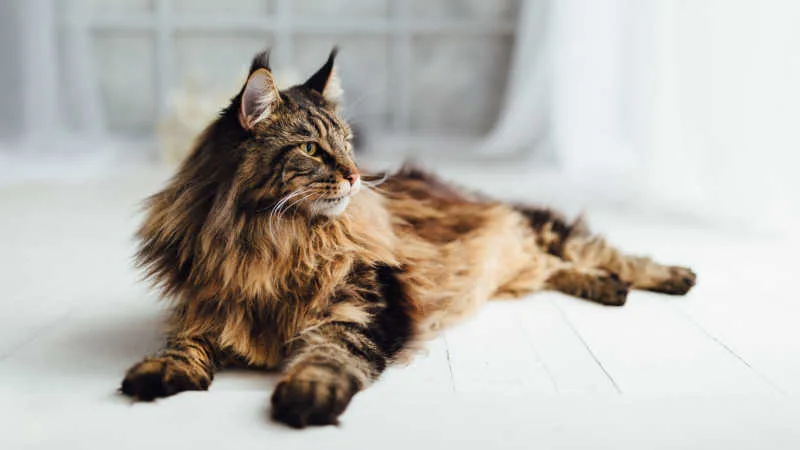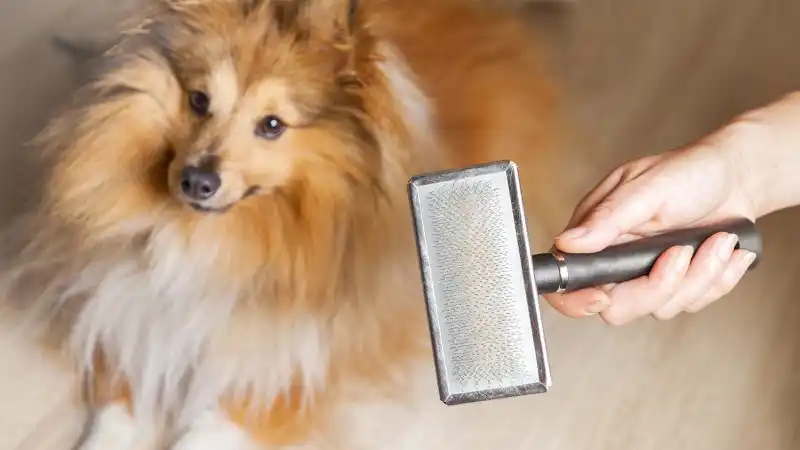Cat Coat Care 101
Cats may groom themselves, but that's not enough to keep their coat in tip-top shape. Here are tips for cat care at home, including how to brush and trim their fur.

How to Care for Your Long or Short-Haired Feline
Cats are known for being fiercely independent, but that doesn’t mean they don’t need day-to-day care.
Regular brushing helps to remove dirt, dead hair, and skin cells your cat missed when they groomed themselves, and means fewer hairballs for you to deal with later.
Here are a few steps to ensure your kitty’s coat is in tip-top shape:
What to Watch Out for Before Brushing
A weekly grooming session with your cat can help increase your bond, as well as alert you to any underlying health issues. Before you brush, run your hands along your cat’s body, checking closely for any wounds, bumps, matted or missing fur, or skin irritation.
Be sure to part their fur to check for ticks and flea dirt, which will look like tiny black specks. Also, take a peek under their tail to see if there’s any matted feces, which you can gently snip away with scissors.
**Keep in mind:**Some cats simply don’t like to be groomed by their humans. If that’s the case, don’t force them to be brushed, as that could result in damaging your bond or potentially injuring yourself. Call your vet to get recommendations for a local groomer or an alternate grooming method.
Brushing Your Short-Haired Cat
Start at your cat’s head with a rubber brush and work your way down to their tail. Always brush in the direction the fur grows, and don’t forget to include their belly and chest.
Be gentle and work on one section at a time, so you can focus on removing the dead hair they’d normally shed, as well as any tangles that could lead to painful matted fur.
Brushing Your Long-Haired Cat
Long-haired cats need extra brushing time during the week to prevent tangles.
Start with a wide-tooth brush on their belly and legs, combing their fur upward toward the head. When working on their neck, brush up towards the chin. For their back and tail, make a part in their fur and brush out on either side.
Remember, being gentle is key! If you find your long-haired cat has a knot, you can use some talcum powder and your fingers to break it up.
If your cat’s mats are simply too much for you to remove, it’s best to leave them to a professional. Using clippers on your own could scare your cat and result in them not allowing you to brush them again.
After your initial round of grooming, use a fine-tooth comb to further brush out their fur, and pay attention to each area on their body to ensure you remove all the dead fur. This also helps spread your cat’s natural oils, giving their coat a healthy shine.
Cat fur can be a bit of an inconvenience, resulting in everything from hairballs to fur-covered clothing. Regular brushing can help keep your cat healthy and beautiful, as well as keep your house and clothing furball free.
Grooming isn’t the only vital part of cat care. Having pet insurance can help you prepare for the unexpected, allowing you to focus more on your cat’s health and less on costly veterinary bills. Click here for a quote from AKC Pet Insurance (underwritten by Independence American Insurance Company) today!
Aimee is a New Jersey native currently living in Richmond, Virginia with her husband and crew of four cats. She has an English degree and when she isn't writing for AKC Pet Insurance, you can find her drinking seltzer, painting, watching reality TV shows, and trying to wrangle her cats into sweaters.
READ MORE ARTICLES

